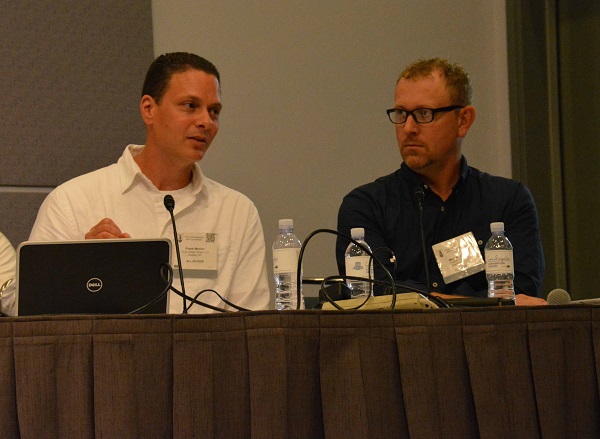by Dot Cannon
Some of the members of AES’ Super Saturday “dream team” had never met in person.
All of them were doing a project they’d never attempted before.
And their first-ever “Product Development Super Session Saturday”, on October first, was a huge suceess.
This special one-day seminar, during the third day of Audio Engineering Society’s 141st International Convention, started on Saturday morning at nine, at the Los Angeles Convention Center.
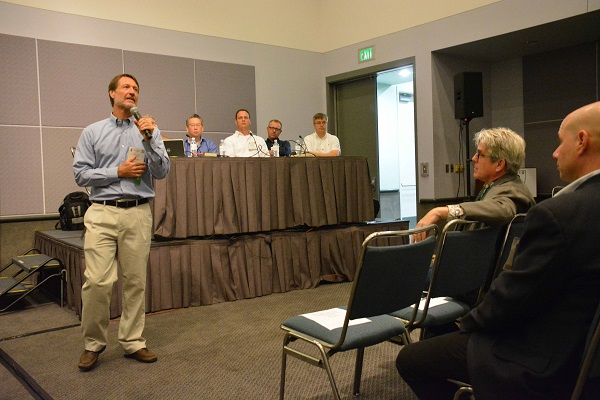
A team of experts were gathering to walk the audience through designing a new, amazing audio product. They’d be starting from the ground up. The product the panel would develop a hands-free audio device, called Speak2Me. The audience would get to see a mini “trade show” demo and give feedback.
The goal: to use the prototyped product as a “how-to” example of a product development process. The new “Speak2Me” product would be designed as a high-end competitor to the Amazon Echo: voice-controlled, but also including standard controls, and a mobile app. And it would, literally, speak.
The time frame for all of this to happen? One day.
“We’re doing something completely different here at AES this year,” said organizer and moderator Scott Leslie, as the first session began.
Leslie had come up with the idea of “Product Development Super Saturday” and had organized his development team in June. Some team members had only communicated via Skype, and were meeting face-to-face for the first time.
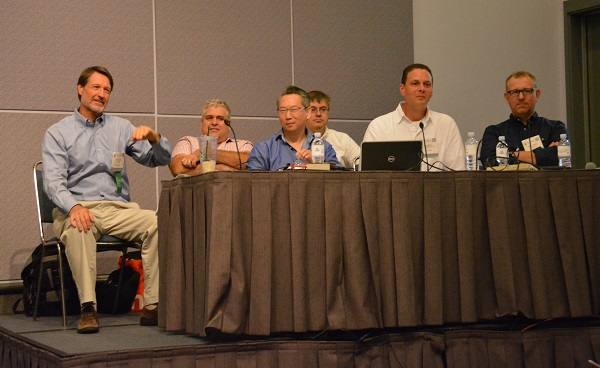
“Here’s the team, today, that we’ve assembled, and I consider (them) really a dream team. And these guys have worked very, very hard. Each of them is an expert in a field. So what we’re going to do today, (is) go through these disciplines, in how do we develop a loudspeaker. Excuse me…an audio experience product.”
Leslie, who is the Chief Architect and Innovation Strategist at PD Squared, outlined the day’s agenda. The morning would start with a session on product management. Next, the group would cover user experience, then industrial design. Acoustic design and processing on the Speak2Me would come next. Then, after lunch, there would be a mini product “trade show”, where attendees would see if the Speak2Me was working as planned.
The afternoon’s sessions would cover natural voice input and how to make it work well with a voice-activated device, then product validation and testing. Finally, the group would look at manufacturing the completed product.
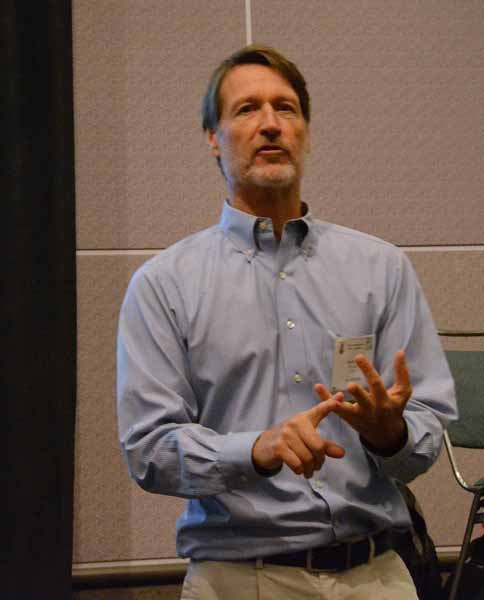
Starting with a plan
First, though, Speak2Me had to have a game plan.
“What’s a product strategy?” Leslie said, beginning his session on “Product Management”. “The word ‘strategy’ is, in business terms…how you do something. How is it different? How do we compete? How do we market? How do we win?”
A product strategy, he continued, had to be concise–or it wasn’t a product strategy. “Speak2Me: sell to the consumer who wants Echo but would prefer the $400 version. Is that clear?”
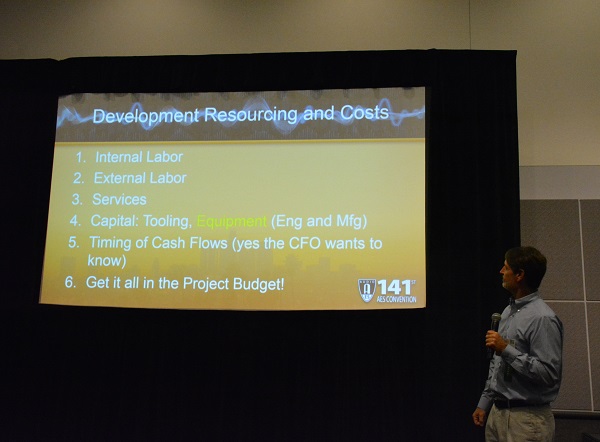
Next, Leslie took his audience through figures on the project’s net present value, or NPV, sales, and ways to cost out the process. Pointing out the ways a popular product could boost a company’s sales of additional products, he recommended allocating a generous budget.
“You want to spend absolutely as much money…(to) deliver as much product as possible. without ruining the brand or taxing the company too far.”
From the consumer’s perspective
User experience designers Frank Marino and Marc Krolczyk, from Rochester-based studio Three Design Group, were next. In their presentation on “User Experience”, they talked about Speak2Me in terms of users’ perspectives, environment and the current market.
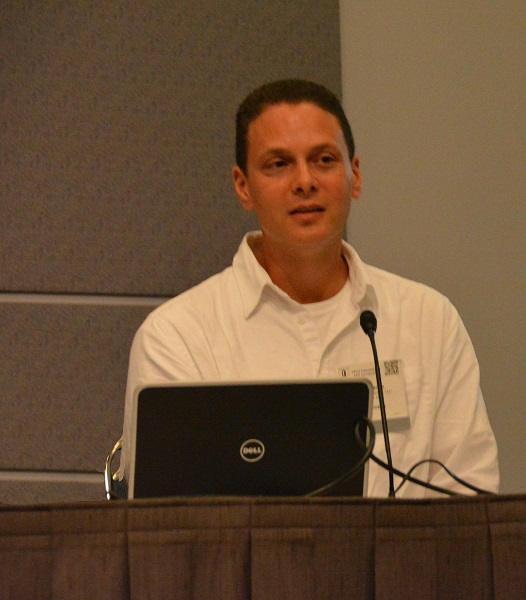
“One of the first things we’ll consider…what’s a killer user experience?” asked Marino. “I grew up in the 70s, and the Walkman was an incredible killer product.”
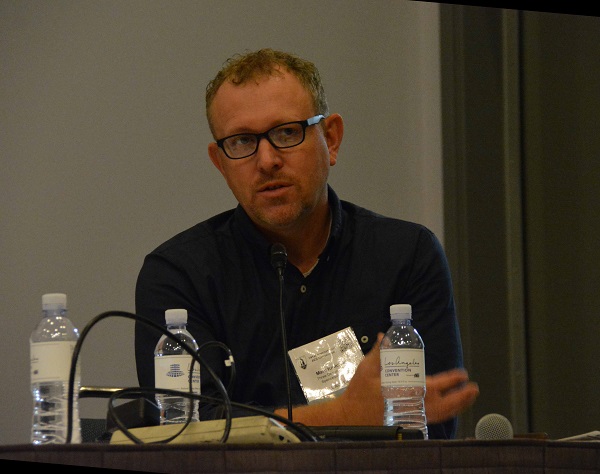
“Present killer user experiences, obviously…Amazon Echo is really popular,” Krolczyk said. “And we’re anticipating Google Home, which is coming very soon.”
So, how to make Speak2Me a present killer user experience? Krolczyk and Marino said, in designing user experiences, they put the user in the center, as the most important piece of the model. For Speak2Me, the user experience they had in mind was one where, for home use, the listener would be surrounded by the music, The listener would be able to have vocals follow them and feel the emotion of a particular song.
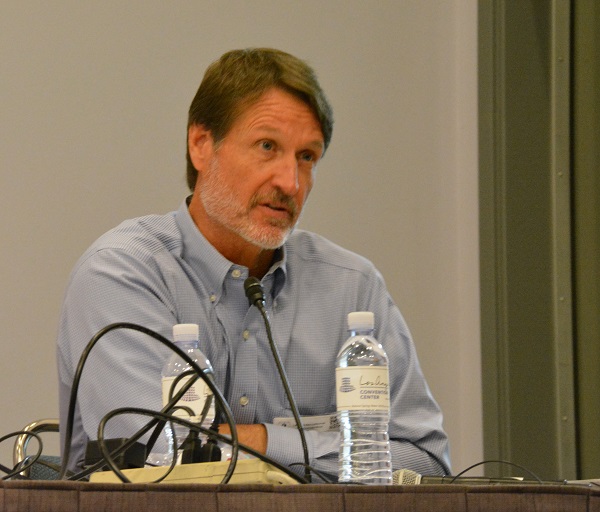
“Remember, in the consumer world, so much of ‘spend’ is emotional,” Leslie said. “One of the key tenets of…Speak2Me is it’s going to speak to you, but it’s going to play music in a more immersive way.”
A second feature, Krolczyk and Marino continued, would include having voice to control the product, along with standard control points like touch. Practical considerations would include where Speak2Me would be used, and how it would react to that environment.
“I had this product in my kitchen, and I want the sound set in a certain way in my kitchen,” Krolczyk said. “And then the party sort of moves outside, to the back patio…what do I expect, as a user? The sound should adjust itself.”
“Currently, we’re in a voice trend,” Marino said. “We’ve been talking about voice {activation) for the last thirty years, but it’s actually happened now finally, it’s actually usable. With (current computer processing), we’re in a mature place to use voice.”
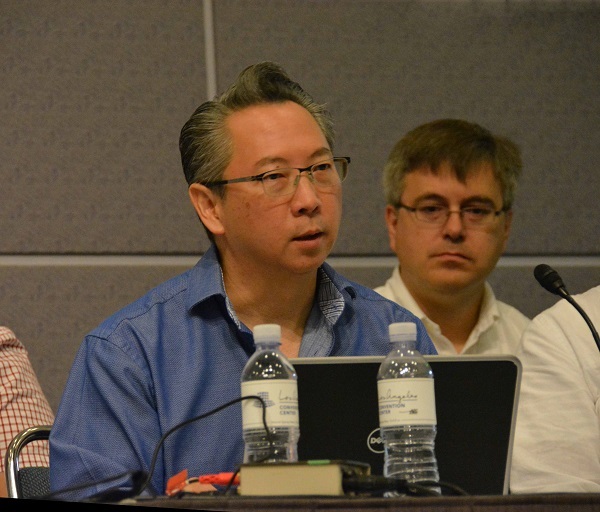
Creating an image
The session that followed–“Industrial Design”–focused on identifying what, exactly, Speak2Me’s brand would be.
“We’re trying to create desire,” said Myk Lum, owner of product design and development consultancy LDA, LLC. “So, how do you create desire? That’s called the ‘X’ factor…Whatever creates an emotional bond between the user and the product, that’s the desire factor.”
Lum said his company always starts a project with either a brand or a product statement.
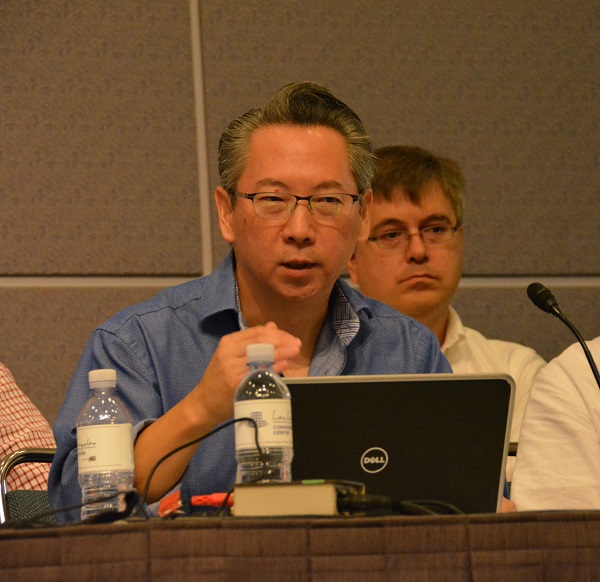
“Basically, it summarizes what the brand or product should be, in a single statement, and boils it down to its essence. So for this one, we came up with, ‘Speak2Me utilizes state of the art technology to engage and connect people by elevating the experiences of sound duplicating.”
They also came up with three keywords to define Speak2Me: connecting, sophisticated and friendly. Typically, Lum said, the design process has five stages. Phase Zero, was brand definition. Then, Phases One through Five were : preliminary design concepts, concept refinement, concept finalization, finalization/engineering, and follow-ups.
During concept finalization, Lum said, Speak2Me’s three keywords would be evident from different distances. “There’s what we call ‘reads’, when we look at this. You can see ‘friendly’ from a long-distance read…It looks like a vase, it looks like somethingthat you might have in your home. ‘Connecting’, as you’re walking…closer, you can see the glowing rings, the gestural touch panel, that’s a medium read.
“So when you get up to it, you have what’s called the ‘closeup read’, and that’s where you start to see the detailing and the finishes, and the precision. And really, that closeup read, that’s where you convey quality in a product.”

During the “Industrial Design” session, Leslie displayed a prototype of Speak2Me, which Scicon Technologies had run for Super Saturday. His team had done consumer research and surveys, previewing the prototype.
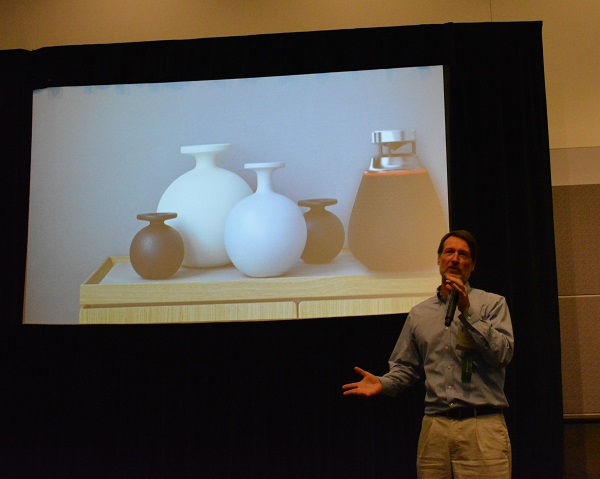
“Women said it looks like a vase,” he said. “We tended to ignore male input.” (The men, he said, had told team members that the prototype looked like a grenade!)
Leslie told the audience that Speak2Me would be targeted to a specific demographic: women, who might use it in the kitchen.
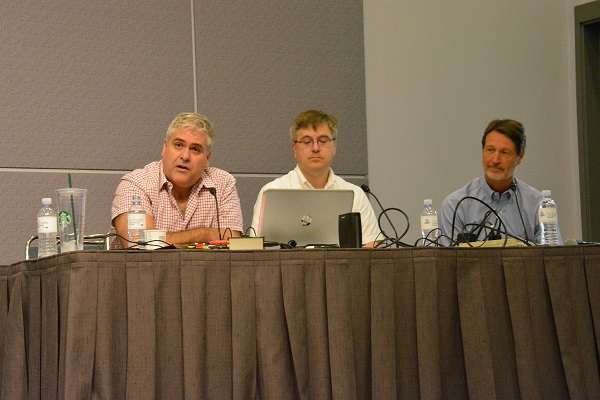
At the core
Of course, the heart of Speak2Me would be the sound. Minimum Phase, LLC founder and lead engineer Mark Trainer presented the next session, on “Acoustic Design”.
“So, the industry trends: basically, things are getting smaller,” he commented. “Things are getting thinner…And, the perfomance is typically compromised. Typically, a lot less bass, and/or less output.”
Trainer referenced the “Big Three”–the three things that dominate a listening experience. “So, the first one is the size of the product,” he said. “The second is how loud it’s going to play. And then, the third thing would be, how much bass.”
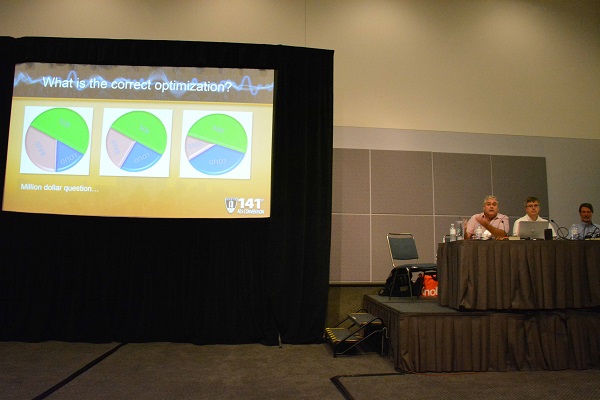
But these three factors involve a compromise in the electrical system. Trainer explained the law of physics behind this in easily understandable terms. “People know it as Hoffman’s Iron Law. What Hoffman basically said, if you get a pizza (and split it, three slices between three people), the first two slices define the third.”
For the Speak2Me, Trainer said, the target was to add more bass.
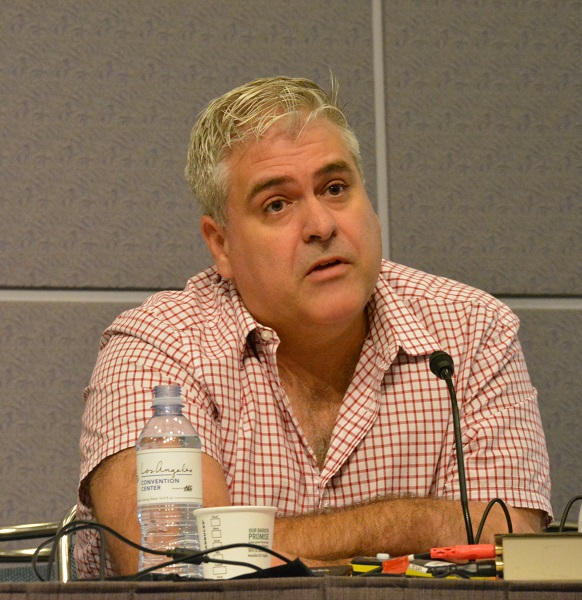
“Large speakers in small boxes don’t yield great bass,” he explained.
Typically, Trainer said, the “engineer’s conundrum” was whether to choose bass or loudness–or whether they were equally important.
Ultimately, he wound up choosing a power of twenty watts and a bass of forty-five hertz for Speak2Me. “Now, we’re playing louder, we have more bass and all we’ve done is increase the box volume to two.”
But he, too, had to take the playing environment into consideration. “(For listening in a kitchen, Speak2Me’s sound would be) very, very bright. So now we have to add a shelf filter.”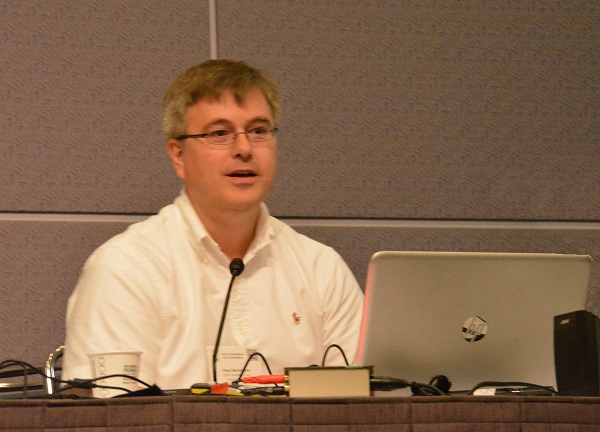
Putting it all together
The final session of the morning was on processing. DSP Concepts, Inc. founder and CEO Paul Beckmann explained how he had prototyped Speak2Me’s system on software his company licenses: Audio Weaver®.
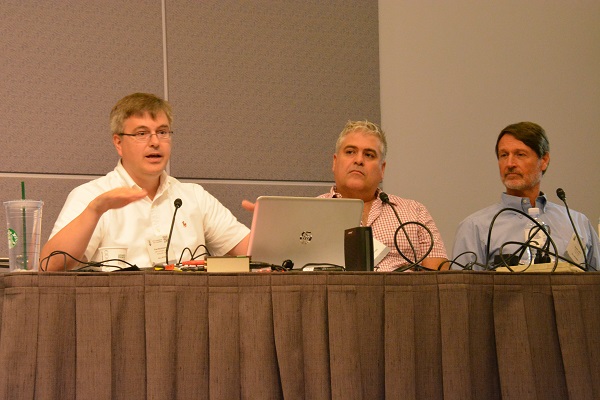
“There’s three different areas of audio processing (for the Speak2Me),” Beckmann said. “There’s music playback processing, that’s kind of what we tackled first. The next part is voice input. So it’s being able to detect when somebody speaks, and then to hone in on what they’re (saying). And then, basically recording the speech and sending it up to the cloud for processing. And then finally, there’s also the voice output part.”
(Speak2Me also has a voice-canceling capability, if it’s playing music and is asked a question.)
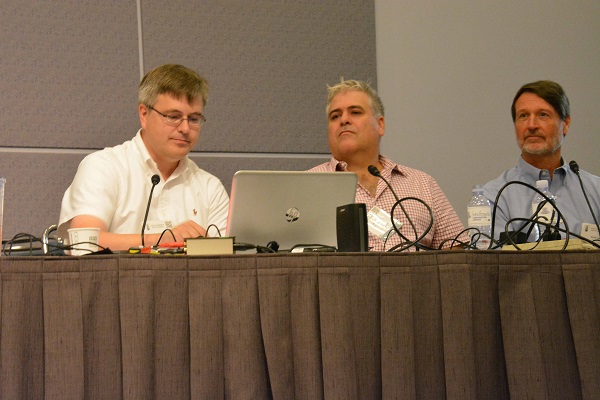
Dragging , dropping and drawing lines, Beckmann reconstructed the music-processing components he’d created for Speak2Me. “So there’s a subwoofer firing down, a tweeter firing up and then we don’t show the reflector there.”‘
He also talked about the process of working with Trainer, who had sent him the specifications based on his measurements for Speak2Me.
“He said, ‘Hey, we’re going to need the following processing stages’…So he sent us the target EQs that he wanted, based on his measurements. So let’s go ahead and look at the signal chain we came up with, for the music processor.”
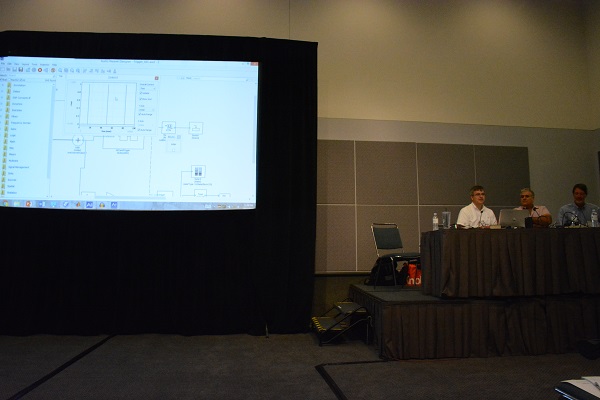
As with his earlier tutorials during the convention, Beckmann showed the audience, on the screen, what he was doing in real time.
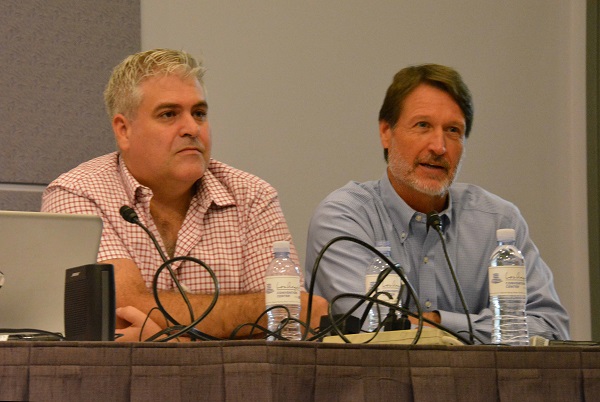
“So, the lab is right in front of you guys,” Leslie commented. “The Audio Weaver® is hooked right up to…his mess he made.”
Playing music through the system, Beckmann demonstrated muting frequencies and adjusting the crossovers. He also said he had sent Trainer a copy of the program, which he was able to use very quickly on his own. “So he did ninety per cent of the work here, with the music tuning.”
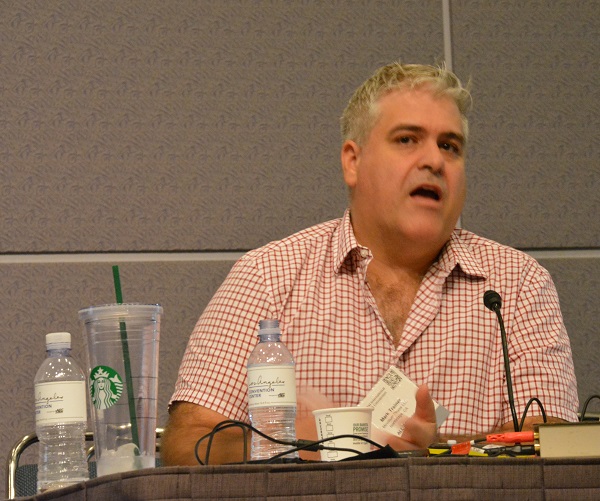
“The benefits of the tool is that it’s actually very intuitive,” Trainer said. “If you were going to draw a block diagram, this is your canvas and you’re drawing actual modules that will operate….It got me up and running within half a day.”
“This last slide may be one of the scariest of the whole presentation for product developers,” Beckmann concluded. “If you have a connected product, your customers are going to expect to have over-the-air software updates. What’s nice is, you can do (product improvements). But the downside is, you’re never going to be done with your software product.”
Audio Weaver®, he said, challenged the typical mindset of having a software team work on a project for a period of months, complete it and move on to something else. “But the expectation now is that you’re going to add new features, new capabilities and so forth….You need to think now, longer-term, about the capabilities you want to put into your product.”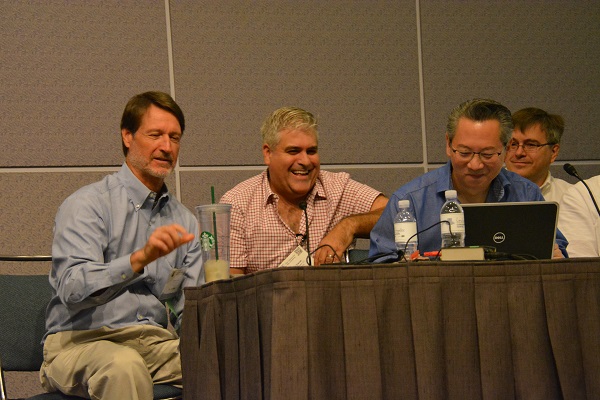
The morning had flown by, and it was time for a break. An actual Speak2Me prototype “mini trade show” demo was coming up, after lunch.

